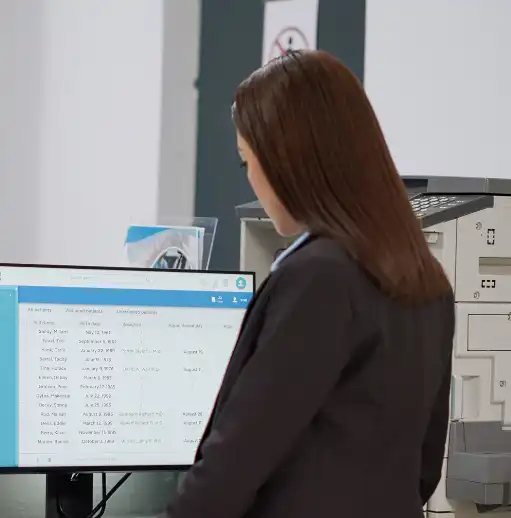
It’s one thing to organize the space you lease with a strategic desking concept that maximizes square footage—it’s another to optimize for utility. How your employees use the space means a great deal more than what you offer them. It’s kind of like going to a fancy French restaurant and ordering a burger. If your employees need a specific type of workspace, make sure they can access it. In other words: if they want a burger, take them to a burger joint.
Never assume the types of workspaces your employees need. The best way to understand their needs and meet them is to inquire, and the best way to inquire is through a space planning programming questionnaire. Here’s how to structure an inquiry to tell you everything you need to know about the types of workspaces you should provide.
Personnel information
Start with personnel and general information. Different employees have different needs, and it’s worth the ability to delineate by job title, business unit, or location within facilities. This information doesn’t need to be personally identifying—it merely has to contextualize demand for different types of workspaces by the role this person plays at the company.
- Full name
- Title or position
- Department or business unit
- Present location (building, section, floor, room number)
Questions about individual (solo) work habits
How do employees work by themselves? Office space planning standards start with the individual and consider their solo work habits. Even if your company primarily works in teams or groups, ask questions about individual work habits to gauge the need for these types of spaces and what characteristics they need.
- How do you use personal workspaces?
- How often do you use personal workspaces?
- What items do you generally bring to a solo workspace?
- Do you currently have access to the individual workspaces you need?
Questions about group (team) work habits
Next, understand how, where, and when employees work together, and what elements shared and group workspaces need. These spaces bring diverse individuals together and they need to do it cohesively. Collect broad data from individuals to gain insight into common denominators you can use to build effective group workspaces.
- How do you use group workspaces?
- How often do you use group workspaces?
- How many people do you usually meet with?
- Do you schedule group work or is it spur-of-the-moment?
- Do you currently have access to the group workspaces you need?
Questions about space design
Survey employees about the utility of workspaces to get a feel for concepts when designing office space. Should you opt for more flex spaces with partial dividers or give employees more enclosed spaces where they can shut the door? Is your ratio of individual workspaces to group workspaces proportionate to demand? Keep in mind that workspaces need to be welcoming and comfortable, as well as versatile and functional.
- To what extent is visual privacy necessary?
- To what extent is acoustical privacy necessary?
- Are current workspaces too big? Too small?
- What types of décor or aesthetics do you prefer?
- What type of furniture do you find most comfortable?
Questions about workspace accommodations
What do your employees need to successfully interact with workspaces, outside of the space design itself? How employees work dictates much of work needs to be present in a workspace—AV equipment, screens, lighting, and conference lines are just a few examples of utilities that employees may require to work effectively. To understand these needs you need to ask about them specifically.
- What types of AV/IT equipment do you need to work effectively?
- How often do you use nearby amenities like printers, copy machines, etc.?
- Do you require dedicated phone lines/extensions for workspaces?
- Do you require large writing apparatuses, such as smart boards or white boards?
Questions about utilization
Some of the most pointed questions you can and should ask are about how employees visualize their interaction with different types of workspaces. There’s much information employers can glean from how often employees say they use certain workspaces or what their expectation for workspace types is. While it’s always a good idea to match this feedback up to hard data about space utilization (if available), use raw feedback to assess how employees feel about their current workplace accommodations.
- Do you prefer to book workspaces or flex into them?
- How often do you use conference rooms each week?
- How often do you use solo workstations each week?
- How often do you use group workspaces each week?
Compile an office space planning questionnaire
Cobble these questions into an office space planning questionnaire and disseminate it across your workforce. Require participation and frame it as an opportunity for employees to shape the types of workspaces they expect to see and use.
Once you collect feedback from all employees, dump the data into a spreadsheet and look for patterns. Do more people prefer hot desks than benching? What’s your average group meeting size? How many hours on average per week do employees think they’ll use conference rooms? Apply this data to your current workplace concept and adjust as necessary. How often you issue this questionnaire is also worth consideration, as the needs of your workplace may change more often than you realize.
Keep reading: Space Planning Software Buyers Guide.






